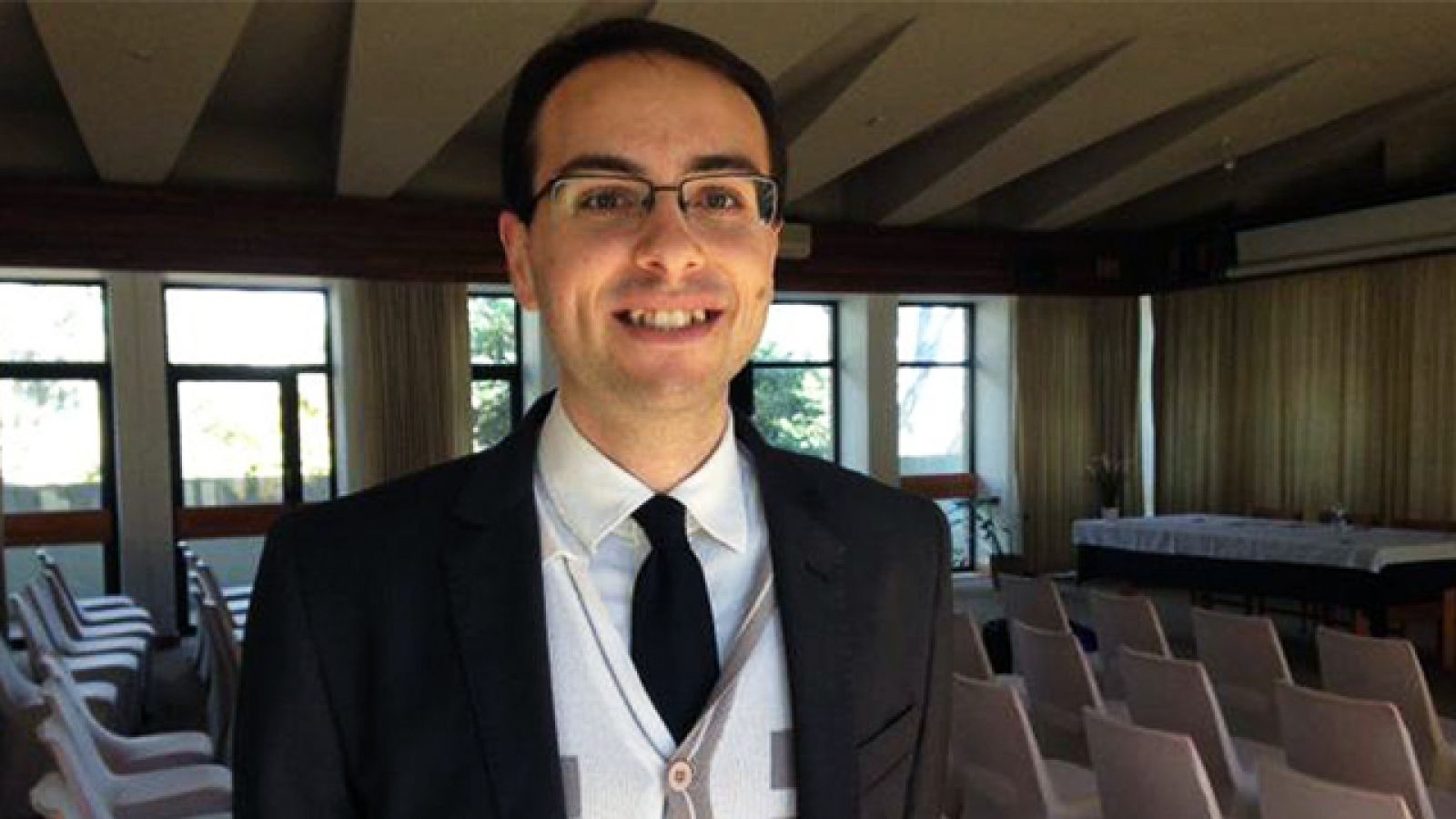Untold history of Italy’s 70-year-old Constitution revealed at ANU

ANU linguist and Italian tutor Gian Marco Farese.
ANU linguist and Italian tutor, Gian Marco Farese, has presented the first ever explanation and analysis of the Italian constitution to a non-Italian audience.
Focusing on the first 12 articles, or “Fundamental Principles”, Gian Marco deconstructed the document, revealing its culture and history as well as the intentions of its drafters. Far from being a dry legal document, he showed the richness of complexity that underlies the text’s plainly written sentences.
“These articles are significant in that they really embody the fundamental ideas and values on which the newly founded Republic back in 1947 was based,” Gian Marco says.
When the constitution was written, there were many people involved – 556, to be precise. And they weren’t just politicians, historians, and experts in constitutional law. Linguists, essayists and literary critics also helped.
“The text was written to be as clear as possible because it had to reach a wide readership; people who had at least an elementary education,” Gian Marco says.
“You want to make sure there’s no ambiguity. It has to be interpreted in the same way by all citizens.”
The drafters also sought to make it stand the test of time.
“This year, we celebrate the 70th anniversary of the approval of the Constitution,” Gian Marco says.
“It’s very significant that the text hasn’t been changed since 1947.”
Gian Marco analysed the Fundamental Principles through the lens of Text Linguistics and Natural Semantic Metalanguage.
Text linguistics, he says, studies texts as a result of connections among sentences made or achieved through a number of linguistic devices. In examining these devices, one can infer the intentions of the producers of the text and how the text is received by its target readers.
Such devices include the use of repetition, collocations, and the use of punctuation.
Gian Marco refers to Article 5, which he describes as being a sentence within a sentence. The English translation begins: The Republic, one and indivisible, recognises and promotes local autonomies…
“From a textual point of view, by means of two commas, it’s saying that the Republic is one and indivisible,” Gian Marco explains.
“So you're making it very clear that it is one and indivisible when it comes to the nation as the centre where the identity of all the citizens is focused.
“But you are [also] specifying that you're promoting local autonomies, which means divisions.”
This, he says, is a drastic change from the past because Italy used to be divided into a number of kingdoms.
“There are still divisions between the north and the south. People seem still to be quite attached to their regional and local identity.
“But at the same time, there's also this feeling of unity, of being a nation.”
Layout and the order of the articles are two other textual devices. Gian Marco points out that the Articles are all at least two or three sentences long except Articles 6 and 12, which comprise one sentence each.
Article 6 is about Italy’s national language, while Article 12 concerns the national flag.
“They really wanted to make them mirror one another.
“And I think it is no coincidence that Articles 6 and 12, both consisting of one sentence only, incur the main symbols of the nation: the language and the flag.”
He continues: “It couldn't have been Article 11, for example. You would have lost the symmetry between 6 and 12.
As part of his project analysing the Fundamental Principles, Gian Marco has produced a new English translation.
“In going through the translations which are already available, I discovered a number of imperfections and renderings which I thought could have been improved,” he says.
Gian Marco, who is leaving after three years in Canberra, took on this project to leave something behind for ANU students of Italian. He wants them to study the text, to give them something that he feels is relevant and approachable.
“It's also a way of encouraging students to become interested in the cultural aspects of language learning, not just learning grammar or the vocabulary.
“This is a perfect example, it seems to me, of how the two are complementary and combine together – language and culture.”
He came to the ANU specifically to do his PhD in linguistics under Professor Anna Wierzbicka, founder of Natural Semantic Metalanguage.
“ANU really encourages and stimulates research. I've had the opportunity to engage in conversation with world leaders,” Gian Marco says.
“I wouldn't have travelled 16,000km if I hadn't known that this would be the case.”
A textual analysis of the Fundamental Principles of the Italian Constitution took place on 24 February at ANU. His Excellency Pier Francesco Zazo, the Ambassador of Italy in Australia, introduced the event, which was live-streamed through the Italian Embassy Canberra’s Facebook page and can now be viewed on demand.